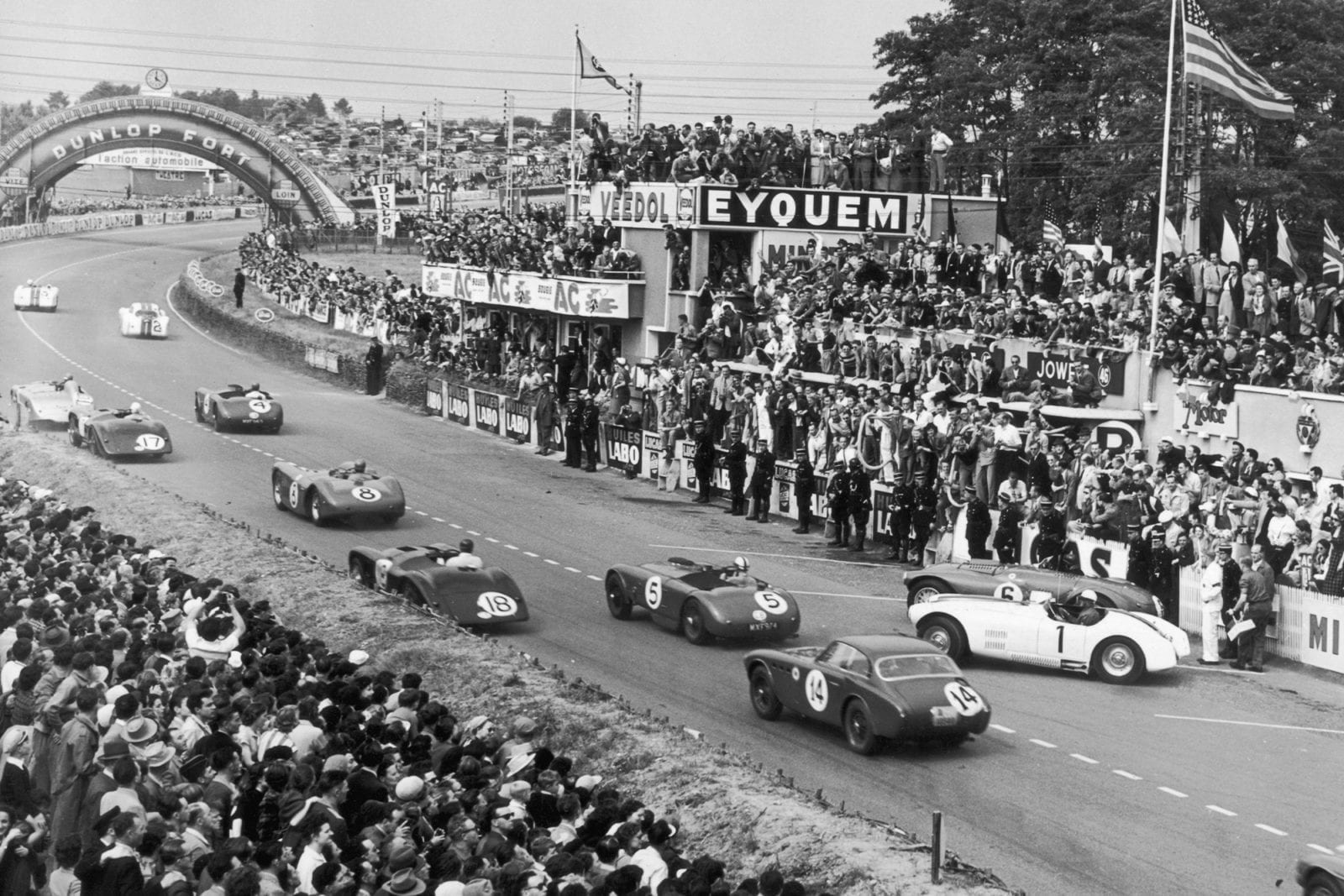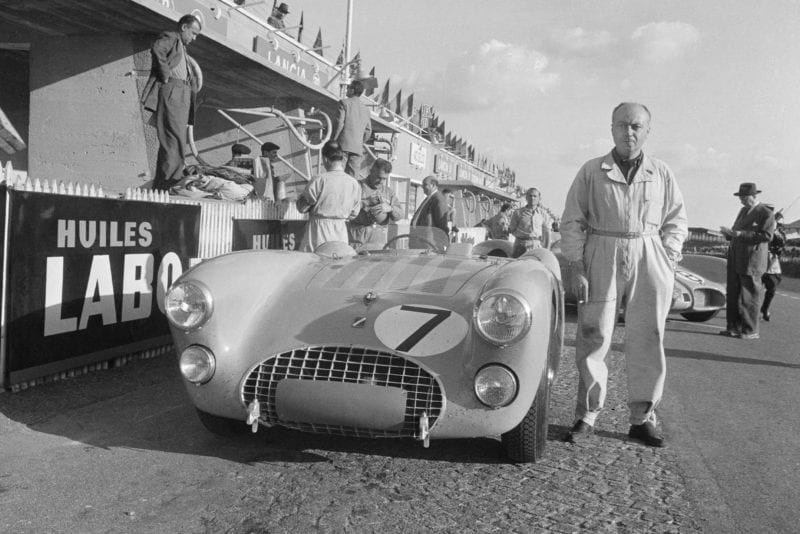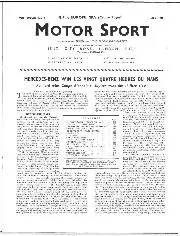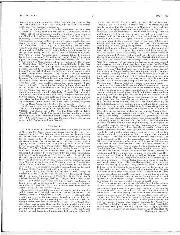A German victory seemed to be settled even during practice. Not that the silver cars had even posted the fastest lap. That honour went to Ascari’s new Ferrari saloon, but it was one of a spread of Ferraris of five different capacities, which did not seem to indicate great confidence in the staying power of any single one. Jaguar was in a collective panic, the hurriedly redesigned low-line C-types already looking doomed to fatal overheating, which transferred British hopes to the pretty Aston Martin DB3s, fast, but at 2½ litres, surely not fast enough. Briggs Cunningham’s trio might elbow their way to the front by sheer V8 muscle, and Arnedee Gordini was exulting at the pace of his new 2.3-litre entry. But few would lay their wages on the highly tuned and enlarged Formula 2 engine lasting the distance.
Levegh naturally chose to start the race, ignoring his age to sprint across the bitumen when four o’clock fell and fire up the Talbot. He had no illusions about setting stunning lap times; he knew that the front-runners were likely to overstretch themselves, and before long it began to happen. All the Jaguars were out within four hours, and the fast Ferraris began to suffer a series of clutch problems, letting the Gordini of Manzon and Behra through to the lead. Neubauer was happy to let Kling and Klenk settle in second, waiting for the Gordini’s expected expiry, but it was the Mercedes which developed trouble first. During the evening the dynamo stopped charging, and soon the silver coupe headed for the dead car park. But behind it., Levegh had been pushing on, exchanging sixth for fourth, then third, and with the Mercedes retirement he was lying second, the two remaining 300SLs keeping station just behind
As darkness obscured the crowds and kept each competitor staring into the yellow pools of his lights, most drivers had swapped with their co-driver; but not Levegh. If and when the Gordini broke, he would finally, after so many years’ dreaming, find himself leading the world’s most famous race. It was 2am before the Gordini slowed and headed for the pits not with engine problems, but minus its front brakes. Behra and Manzon wanted to continue on rear brakes only, but Amedee Gordini refused to take the risk. Suddenly Pierre Levegh’s determination seemed worthwhile, as he saw No8 lifted to the top of the leader board. Those spectators packed into the stands, the fields and the car parks who were not asleep watched the quartet of lights spearing into the fog which cloaked the track and muffled the relentless throb of the big six, and wondered when the two Mercedes would pounce.
But as the light grew the Talbot still led, its four-lap cushion enough to refuel and change tyres without losing its place. While the campers restored themselves with breakfast, Levegh’s sporting fitness buoyed him up; yet again he ignored the pleas of his team and his worried wife during a fuel-stop, leaving Marchand standing in the pits, frustrated and nervous. He was not alone, though; Briggs Cunningham had also gone this far without relief; lying seventh, and it was only after midday that Spear climbed into the dirt-covered Cunningham for his first stint.
At about I 1 am a haggard Levegh again pulled up in front of the Talbot pit to refuel. Again Marchand and Mme Levegh argued with the glazed driver. He would still be a winner if Marchand took over; the glory would still fall to France, and to Talbot; if he continued he was going to lose concentration, perhaps fall asleep, bringing certain disaster… Onlookers wondered whether it was admirable grit or the exhausted loss of reason which now drove Levegh, but when the blue car roared back on to the track, Marchand was again left behind in his still-pristine overalls.




